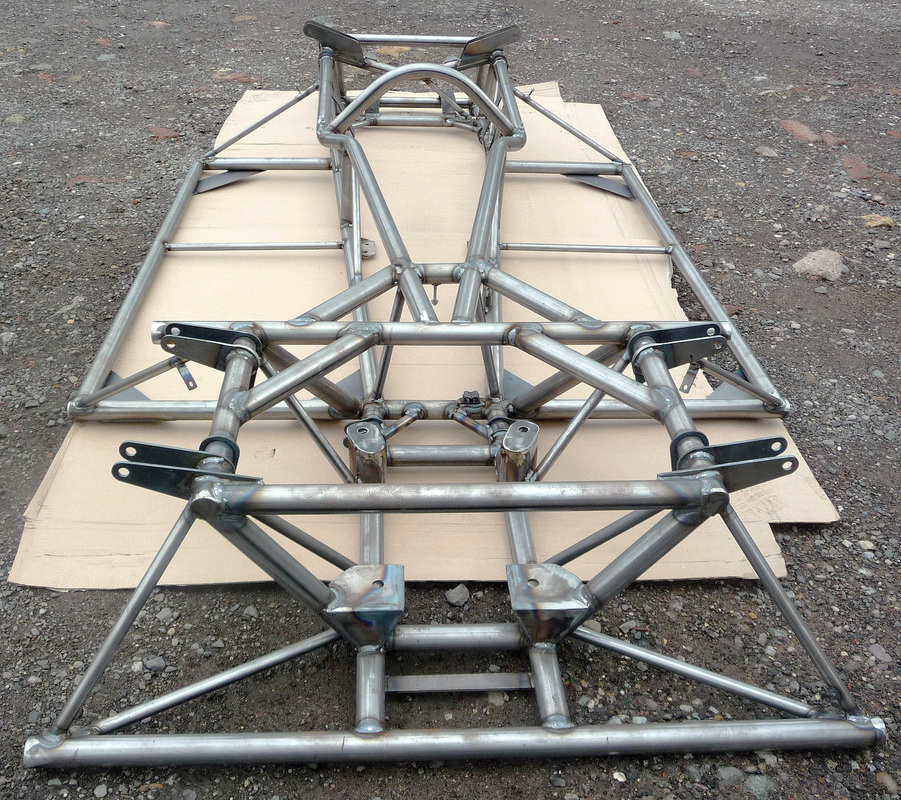'ell it'll just be 3 times stronger than the original car, albeit maybe defeating Chapman's original concept of an ultra light car. :) :) Ya Know looking at that upside down rear light panel, it kind of looks like a Corvair. On a more serious note, what was the original intent of the central tunnel frame structure? Dave.
The original intent for the backbone chassis was to test the mechanical bits (under a Falcon shell) while the body/chassis unit was being developed. The backbone ended up as the chassis rather than the body being an open top fiberglass monocoque as it proved to be quite cheap.

wspohn
HalfDork
3/31/17 10:42 a.m.
The only thing that I always wondered about with the backbone style frame was whether the trade off of steel for fibreglass was a good one i.e. holding your butt off the ground, was a good idea.
My TVR race car had a tubing perimeter attached to a similar but wider central backbone, so the glass floors and outer panels attached to the outer frame members (which were made of tubing lighter than today's exhaust pipe) could be quite light.

I do believe that having a mostly fibreglass monocoque is lighter than a steel one, and that is surely what Chapman's intent was. And he did have a wee bit of strengthening wire in there. Not having any experience with a Lotus I wouldn't give you two ounces that any of the car would hold together for even one race. But they did. Maybe Chapman new something I don't. :):)
We will try to keep it as light as possible, but will give up a few pounds, to have no cracks in the fiberglass.




 Update by Tim Suddard to the
Update by Tim Suddard to the
















